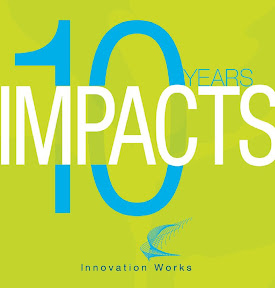Well, the publisher of Goldsmith’s latest book wasted no time today in making sure reporters here in City Hall's Room 9 (on request!) had enough copies to keep them riveted for months to come. Title: “The Power of Social Innovation,” with the subtitle of “How Civic Entrepreneurs Ignite Community Networks for Good." Here’s a nerve-tingling description of what the book is all about, courtesy of a media consultant hired to promote a now-likely-to-be-suspended book tour by Goldsmith:
Here’s a nerve-tingling description of what the book is all about, courtesy of a media consultant hired to promote a now-likely-to-be-suspended book tour by Goldsmith:
"This candid and engaging book offers concrete strategies for aspiring innovators and civic entrepreneurs across sectors—non-profit, civic, government, business and philanthropic— who believe that we can do better in solving our communities’ most pressing social problems. Rich with vivid examples of how results-based problem solving can be applied to areas like criminal justice, homelessness and education, the book demonstrates that when innovators effectively engage both government and the communities it serves, real results are possible.”




 Over a year after the Recovery Act of 2009 was signed into law, the U.S. Department of Energy says that $32.5 billion of the $36.7 billion it was authorized to spend is "spoken for," and nearly 5,000 projects have been funded. The department has selected all but 1 percent of the proposals that will receive grants and contracts. So far, however, only $3.5 billion has actually been spent, and the money has only directly created 22,841 jobs.
Over a year after the Recovery Act of 2009 was signed into law, the U.S. Department of Energy says that $32.5 billion of the $36.7 billion it was authorized to spend is "spoken for," and nearly 5,000 projects have been funded. The department has selected all but 1 percent of the proposals that will receive grants and contracts. So far, however, only $3.5 billion has actually been spent, and the money has only directly created 22,841 jobs.
 know I was complaining about this earlier this year but I have to
say that April was really quiet, as far as small business
research goes.
know I was complaining about this earlier this year but I have to
say that April was really quiet, as far as small business
research goes.


 As skilled a politician as he is, President Barack Obama has benefited from a whole heap of luck in his career. His presidential campaign, you may recall, reached orbit only after the economy crashed with a Republican at the helm. So, perhaps on a cosmic level, it was time for Obama to meet some truly rotten fortune. And he did – when he proposed opening up large swaths of the Atlantic and Gulf to offshore drilling just three weeks before BP’s deep-water rig sank off the coast of Louisiana, releasing 5,000 barrels of oil per day directly into the ocean. What does this disaster mean for Obama’s “pan-energy” strategy? It really depends – if we have to wait for three months for a second well to be drilled, Obama will face intense pressure from his base to back down on offshore drilling. If BP can block the leak soon, offshore drilling could remain politically viable. As Republican Sen. Lindsey Graham said this week, “The Challenger accident was heartbreaking, but we went back to space.”
As skilled a politician as he is, President Barack Obama has benefited from a whole heap of luck in his career. His presidential campaign, you may recall, reached orbit only after the economy crashed with a Republican at the helm. So, perhaps on a cosmic level, it was time for Obama to meet some truly rotten fortune. And he did – when he proposed opening up large swaths of the Atlantic and Gulf to offshore drilling just three weeks before BP’s deep-water rig sank off the coast of Louisiana, releasing 5,000 barrels of oil per day directly into the ocean. What does this disaster mean for Obama’s “pan-energy” strategy? It really depends – if we have to wait for three months for a second well to be drilled, Obama will face intense pressure from his base to back down on offshore drilling. If BP can block the leak soon, offshore drilling could remain politically viable. As Republican Sen. Lindsey Graham said this week, “The Challenger accident was heartbreaking, but we went back to space.”
 The
The  The full U.S. House of Representatives is likely to vote on reauthorization of the America COMPETES Reauthorization Act of 2010 as early as next Wednesday, May 13. ASTRA believes that bipartisan support for this vital legislation is important and most timely, given the nation's economic woes.
The full U.S. House of Representatives is likely to vote on reauthorization of the America COMPETES Reauthorization Act of 2010 as early as next Wednesday, May 13. ASTRA believes that bipartisan support for this vital legislation is important and most timely, given the nation's economic woes.
 Despite the growing complexity of doing business in China, it is where innovation needs to happen with products designed solely for Chinese consumers.
Despite the growing complexity of doing business in China, it is where innovation needs to happen with products designed solely for Chinese consumers.




